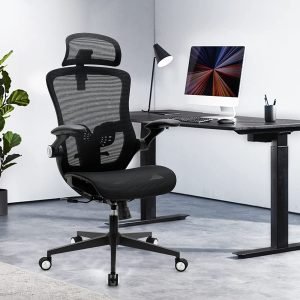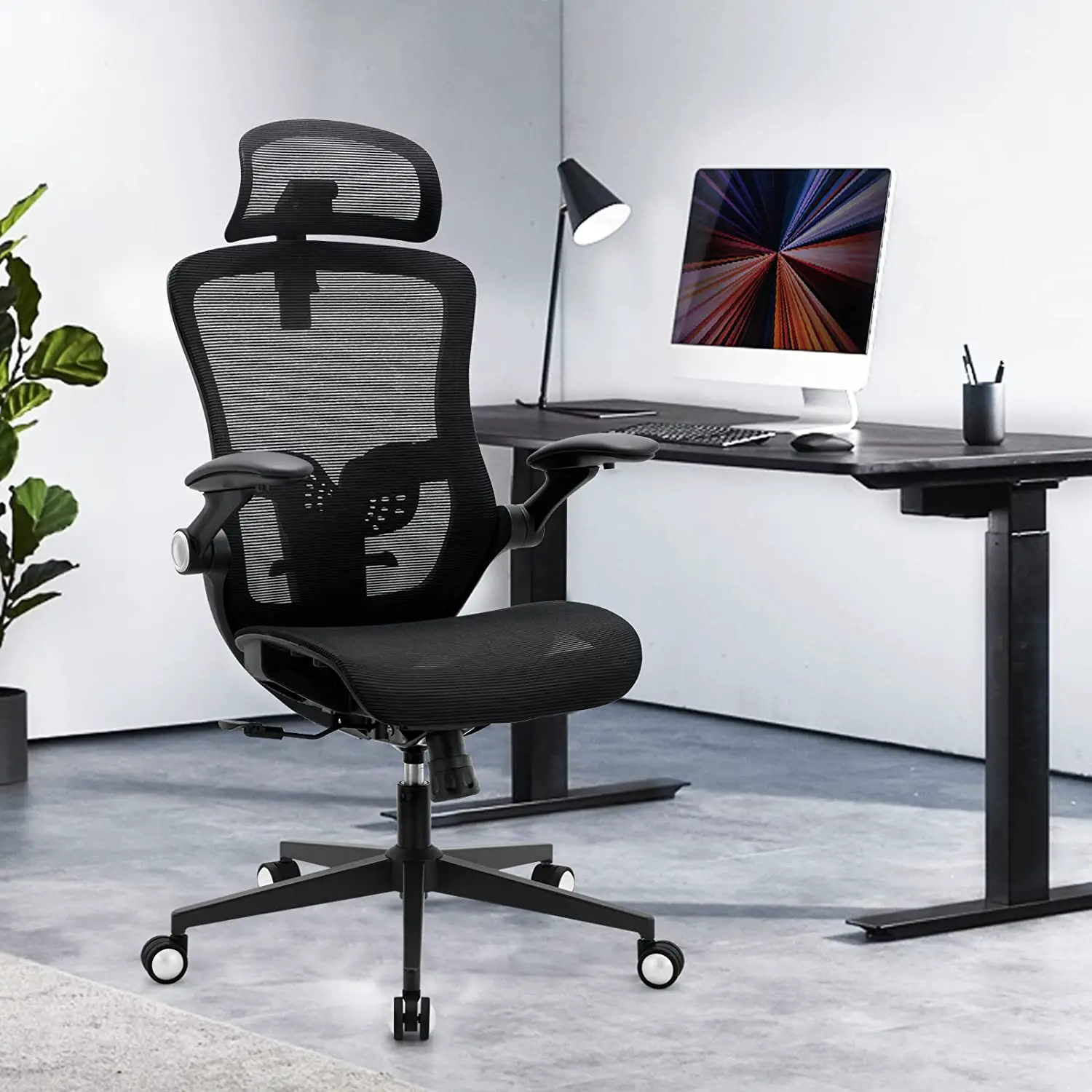At one point in our lives, almost everyone has dealt with a squeaky office chair. It can be very irritating and difficult to concentrate on work when your chair makes all kinds of weird noises.
A Squeaky chair is a pain in the neck for you and those around you. It can distract you while working and may lead to a decrease in productivity.
Here are some best ways to help you fix your squeaky office chair; tighten up the gas lift, grease up your chair, apply glue, use soap, inspect the seat and lubricate all metal parts of your chair.
In this article, we will talk more about this and a few other simple methods to help you fix the squeaky noise issue in your office chair. Most of these methods require only general knowledge and a little of your time to get things done.

Finding the Source of the Squeaky Noise
Firstly you need to figure out where the noise is coming from. Once you have figured out the source, you can now focus and devote yourself to tackling that specific area without wasting time trying to fix everything. Here are some areas of your office chair that can induce squeaky noise.
- The wheels
- The backrest
- The gas lift mechanism
- Screws and bolts
Causes of the Squeaky Noise in Your Office Chair
Loose bolts and screws
If the screws and bolts that hold your office chair firmly in position become loose your chair will begin to make squeaky noises. Due to this the chair’s limbs and base may also get loosened as well. when this happens you may lose the stability you usually get when you sit on the chair.
The squeaking noise is an indication that a problem needs to be addressed. However, leaving loose screws and bolts like like that can cause your chair to fall apart in a matter of days. So you shouldn’t delay to address the problem.
Even some of the best chairs for back pains and proper sitting posture can also have this issue. In case you use an ergonomic chair you may have to disassemble it before you can figure out the source of the problem.
Rusted Screws and Bolts
The screws and bolts that keep your chair upright may become rusty over time due to the long period of usage. This is a common problem in most metallic chairs. You can pinpoint if something is rusty by its color, so ensure to check out your chair’s bolts and screws every once in a while. This will help you find out if everything is working as it should.
If you find yourself living in a humid area, you might realize that the screws and bolts in your chair get rusted more frequently. In most instances, the moisture is what causes rust to occur. However, there are numerous ways to solve this problem and even stop it from happening again in the future.
The Chair’s Wheels or Casters
Generally, there are metal posts fitted out on top of the wheel. Over time these posts can get worn out due to their frequent usage. In other instances, the screws that keep the wheels steady can get loosened due to the overload placed on your office chair. When this occurs the wheel axle creates friction and thus inducing the squeaky noise. Bear in mind that defective bearings can also induce noise.
Also Read:
Tips to fix squeaky gaming chair
There are several reasons why casters will induce noise. But in most cases, the noise is a result of damaged tread
- Worn-out tread
- Tread cracks
- Chips in the tread
- Delamination of the tread
Usually, the harder wheels make more noise than the soft, small or large wheels.
Damaged Hex Shafts
The hex shaft in your office chair can also induce noise. The squeaky noise comes about when there is a weak clutch between the swing arm and the hex shaft.
Gas Lift Mechanism
Occasionally the squeaky noise from your office chair can be coming from the gas lift piston. A defective gasket along the piston shaft from the pneumatic cylinder makes this noise.
Seat Tension Spring
At times the squeaky noise from your office chair might be emanating from the seat tension spring which is positioned at the bottom of your seat. The seat tension spring is found in the seat tension turn-knob casing.
To remedy this problem, open up the turn-knob casing and apply a considerable amount of light machine oil or grease on the springs.
Loose Chair Legs
Sometimes a loosened leg can cause your office to squeak. However, identifying this issue is easier as your chair loses its stability when the legs become loose. This may occur as a result of the shrinking of your chair’s dowel.
Broken Parts
If your office chair has a broken component, then it is common to hear a squeaking noise from it. Usually, a broken component in your office chair can be fixed at home by following some DIY procedures. However, a broken chair is an indication that you need to replace your chair.
Weak Joints
Not all office chairs are made of nuts and bolts. Usually, the cylinder-mechanism junction, the swivel-base junction is one of the junctions that can cause the squeaky noise in your chair. If you tighten the bolts or nuts and the squeaky noise doesn’t stop then it could be due to weak joints.
The frequent use of your office chair may cause them to rub against each other and induce friction. The friction will loosen the joints and cause the chair to squeak anytime joints rub against each other.
How to Fix the Squeaky Noise in Your Office Chair
Tighten Up Loose Bolts and Screws
This is one of the first things you may want to do to tackle the squeaky noise in your chair. Simply look out for loose bolts and screws and tighten them up with a screwdriver. In most instances, this helps stop the squeaking noise.
Here are a few steps to help you tighten up the loose nut and bolts.
- Turn your office chair upside-down
- Inspect for loose screws and bolts by rotating them with your hands.
- Even though you can tighten up the screws with your hand, we don’t recommend that.
- Use a flathead screwdriver to unscrew all the bolts. You can apply a little WD40 lubricant on them if they are too hard to remove. clean them up once you have removed them.
- Next, tighten up the screws and bolts again.
- In case some of the screws are rusted, replace them with new screws.
- Before replacing the bolts ensure to put a significant amount of tissue under the screw area and on the upholstery of your office chair.
- Apply a considerable amount of grease close to the bolt area and replace the screws.
Inspect the Seat
If you use an office chair that has a synchro-tilt mechanism, it is likely the cause of the noise.
Here are a few steps to help you fix that problem easily.
- Take out the seat
- Spray a considerable amount on the lever mechanism
- Reinsert the seat to its original place.
Use Soap
Another way to get rid of the noise in your office chair is to rub soap on the squeaky spots. This will help lubricate the components and put an end to the noise.
Lubricate All Metal Parts with Oil
Use WD40 which is a water-resistant silicone spray lubricant. Spray a considerable amount of lubricant on all the metal components of your swivel chair. Rusty springs may also become erratic over time and make squeaky noises anytime you lean on them.
Apply the lubricant on the squeaky areas and loosened nuts that are pivotal for the movement of your chair. once you are done use a tissue to wipe off the excess lubricant.
If you are finding it difficult to apply the lubricant on the axle and screws. You can disassemble them, and turn over the knob housing and the wheels. Carefully reassemble the chair once you’re sure all the suspected parts are properly lubricated. You can try sitting, leaning on the recliner, or rolling your chair to find out if the noise has stopped.
Tighten Up the Gas Lift
If the gas lift is the cause of the noise in your chair, then you need to ensure it’s inflated. You can lubricate the gas lift with WD40 or other lubricants to get rid of the squeaky noise.
Grease Up Your Chair
Another best way to get rid of the squeaky noise in your chair is to grease all the moving parts of the office chair. This will help reduce the friction between metal components and stop the noise.
You can try adding padding if the squeaky is emanating from the seat itself. This will also help decrease friction and get rid of the noise.
Work on the Hex Shaft
To get rid of the noise from the hex shaft, you need to disconnect the hex shaft from the swing arm mechanism. Then apply a significant amount of the WD40 lubricant to it. However, you can use other lubricants or white lithium on it.
Apply Glue
Apart from the lubricants, you can also use glue to get rid of the squeaky noise. Even though the glue is not used as a lubricant but it’s used to fix broken components. For instance, a broken armchair can create noise and even injure your arm with its sharp edges.
With the powerful adhesive glue, you can fix the broken parts when trying to ensure you have figured out the right spots before you apply the glue.
Fix the Tension Spring of Your Chair
The spring in your office chair which is also known as the seat tension spring serves as a shock absorber for your seat. But if you hear a squeaking noise anytime lean back on your chair. Then the seat tension spring is the culprit behind the noise. To Fix this issue remove the bottom cover which is commonly the fabric part of your chair.
After that follow the steps below to help you fix the issue.
- Turn the chair bottom up and take out the fabric that conceals your seat frame.
- If you notice that a single spring is out of order, look out for any webbing straps or brackets that fasten the springs together.
- Use a cutting plier to take out the broken metal bracket. If you realize a webbing system fastens the springs together, there is no way you sew back a single broken twine. In this case, you need to replace the webbing. However, you need a Webbing stretcher to reinstall the new straps in their position.
- In case the metal bracket needs replacement instead, put the new metal bracket and hook back the loosened spring or the coil to its position.
- Reinstate the fabric and stretch it out to ensure it’s firm before you staple it on the frame.
- Drive the screws in and tighten them properly if you removed any.
Replace Your Chair
If you have exhausted all the approaches above but the squeaky noise in your office chair still persist. Then it’s time you consider getting a new office chair.
Usually, worn-out office chairs can work over and make a lot of noise. Some of the best chairs available can only last for about five years at most. It would be better to get rid of your old cranky chair which can no longer support your back properly. Replacement of your chair is one of the best ways to start over.
Get a Professional
If you have tried all these methods and the squeaky noise still persist, then you need to contact a professional to have a look at your chair. They can figure out the possible cause of the noise and fix it for you.
Conclusion
Many people will agree to the fact that using a squeaky chair can be very annoying, especially for those who want to focus and do perfect work in the office. In this article, we have discussed several approaches to help your fix the squeaky noise issue in your office chair. Choose the most suitable approach to help you fix the problem easily and enjoy a quiet environment in your office.
- How to Chew Quietly While Eating-Effective Tips - April 14, 2023
- Why is My Clutch Pedal Squeaking – Causes & Fixes - April 14, 2023
- Propane Tank Making Hissing Noise (Solved) - February 25, 2023

